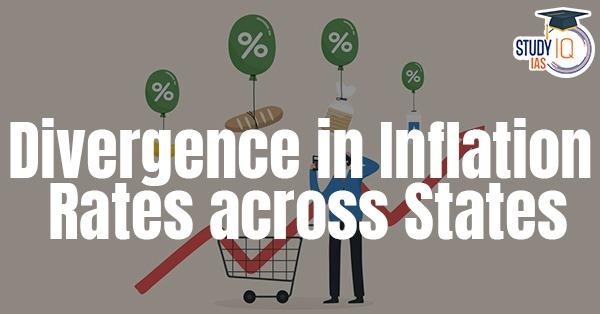Table of Contents
Inflation Rates
- Inflation Rates can be defined as a general increase in the prices of goods and services in an economy. An Inflation Rates of 2 or 3% is beneficial for an economy as it signals growth.
Inflation Rates: Types
- Cost push: Cost-push Inflation Rates is triggered when there is an increase in the cost of important goods or services where no suitable alternative is available.
- Demand pull: Demand pull Inflation Rates occurs in an economy when demand for a goods/service exceeds supply. This can be triggered due to an increase in the money supply or income.
- Built-in Inflation Rates : Built-in inflation is triggered when workers demand higher salaries or wages to keep up with the rising living cost. This forces businesses to raise the cost of their product/service.

Inflation Rates: Pattern Across States
- According to the Consumer Price Index (CPI), Inflation Rates has crossed the comfort level of 6% and has reached 8% in July 2022.
- About 14 States and three UTs have faced higher than the national Inflation Rates , most of them averaging over 7% till July 2022.
Inflation Rates: Reasons for the Variation
- Higher Transport Cost: In terms of food Inflation Rates, states with low crop production have higher food inflation as transport costs are added on.
- Rural Inflation: States with rural areas also witness more inflation as the CPI for rural areas assigns a higher weightage to food. On average, rural inflation has been higher than the urban inflation.
- Consumption patterns: Consumption patterns across states are diverse. The price trends of different items also influence Inflation Rates .
- Tomato inflation dropped to 44% from 158.4% in June, while meat and fish price rise declined to a low of 3% in July.
- Tax rates: Some states have reduced fuel taxes, which have reduced Inflation Rates on certain fuel.

Inflation Rates: Importance of Controlling
- Affects Spending: Persistent high inflation has dented spending patterns, particularly in rural India.
- Private consumption, which is a major driver of growth, has been negatively affected due to high inflation.
- Private consumption would have grown faster in case of low Inflation Rates.
- Relief to Consumers: Understanding factors driving inflation in different states will help policy-makers to address pressure points to provide lasting relief to consumers.
- Micromanagement of inflation may help address local issues that have been driving Inflation Rates across states.





















 WhatsApp
WhatsApp